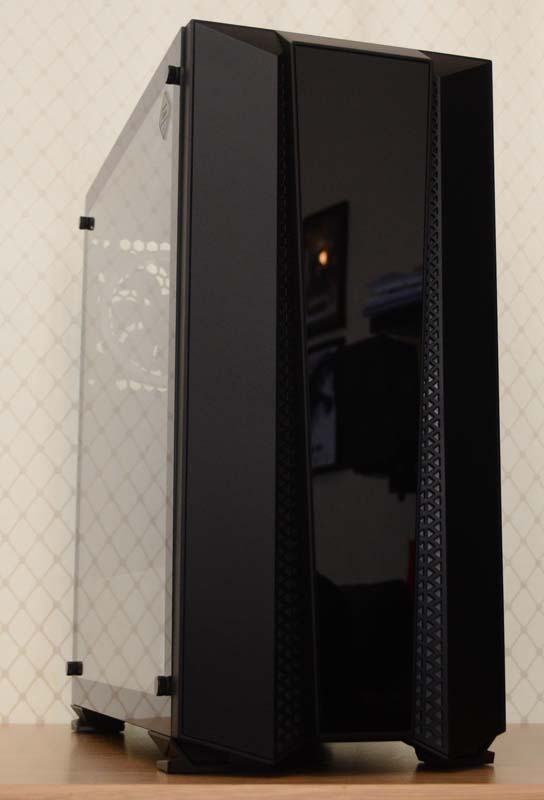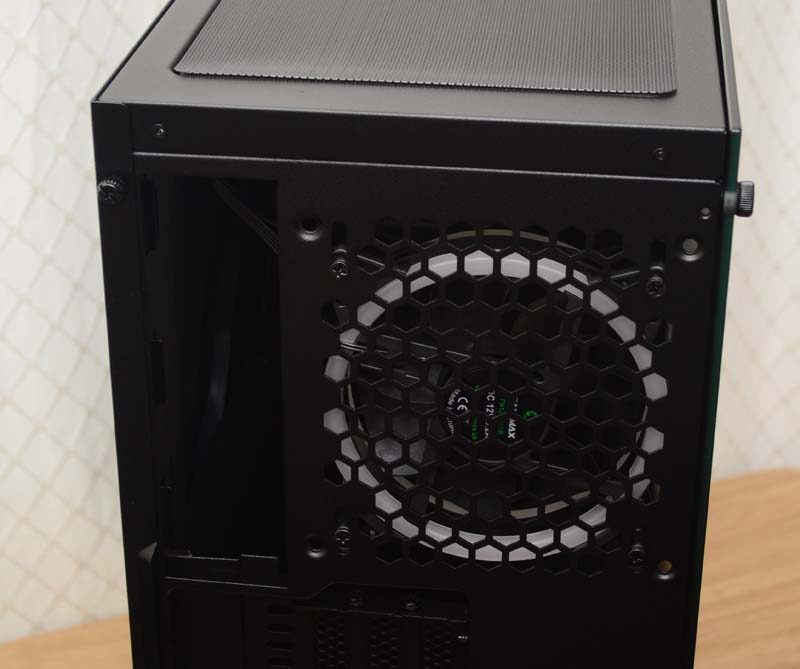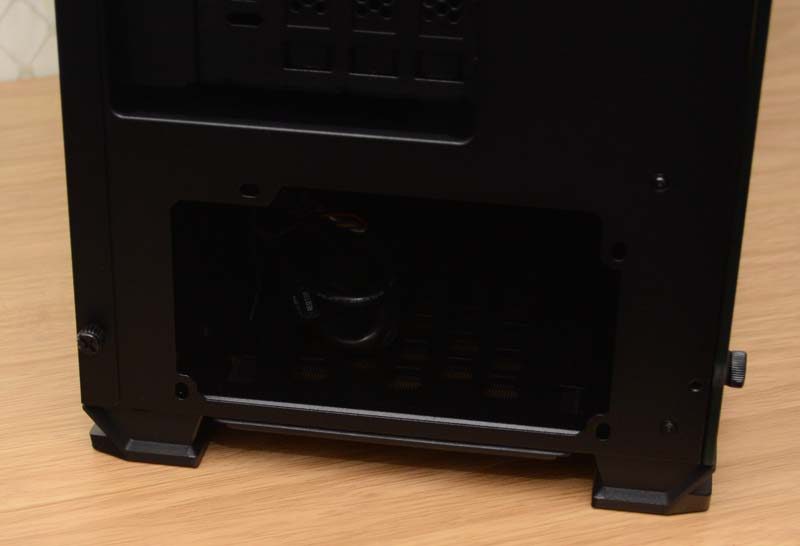Game Max Phantom RGB Tempered Glass Chassis Review
Peter Donnell / 6 years ago
A Closer Look – Exterior
Out of the box, the Phantom is pretty straightforward, and doesn’t depart too much from other Game Max chassis. It has a full-size tempered glass side panel on the left side, as most chassis do these days. The front panel design is pretty interesting though, with a glossy midsection, two vertical strips of ventilation, and then a matte finish on the outer sections.

The right side panel is pretty standard looking, just a blank panel. What is surprising is how thick the panel is, it’s surprisingly strong and adds a lot of strength to the build.

Upon the top, you’ll find a large dust filter to help keep things nice and clean. Most importantly, it’s magnetic too, so you can just lift it off for a quick and easy clean.

Below it, you’ll find a pair of 120/140mm fan mounts, although you can fit a slim radiator up top too if you desired.

Front I/O
The front panel is simple enough but is nicely split with half on the left, half on the right side of the chassis. Here you have power controls, as well as an LED controller to cycle effects and colours on the RGB fan hub.

On the right side, you’ll find a pair of USB 3.0 ports and the audio jacks. Again, nothing crazy, but it’s everything you need.

The front panel looks stunning, and rather simple too. However, those triangle details are hiding a load of RGB lighting that will really spark to life when we power up the system. We’ll get to that, so be patient!

Around the back, things look pretty interesting. There’s a 120/140mm fan mount at the top, which has an RGB 120mm fan pre-installed.

The 120mm fitting has some height adjustment, but the 140mm does not.

Vertical GPU Mount
The expansion slots are pre-fitted vertically too. You’ll need your own riser cable, but it’s ready to rock for verticle. You can remove it, turn it, and use the extra brackets in the box to return it to 7 x horizontal slots if you desire.

Finally, a PSU mount at the bottom, pretty standard, but we all need one, right!?

Finally, on the bottom, a huge dust filter provides a load of airflow for the chassis as well as an easy side out design for quick cleaning.




















